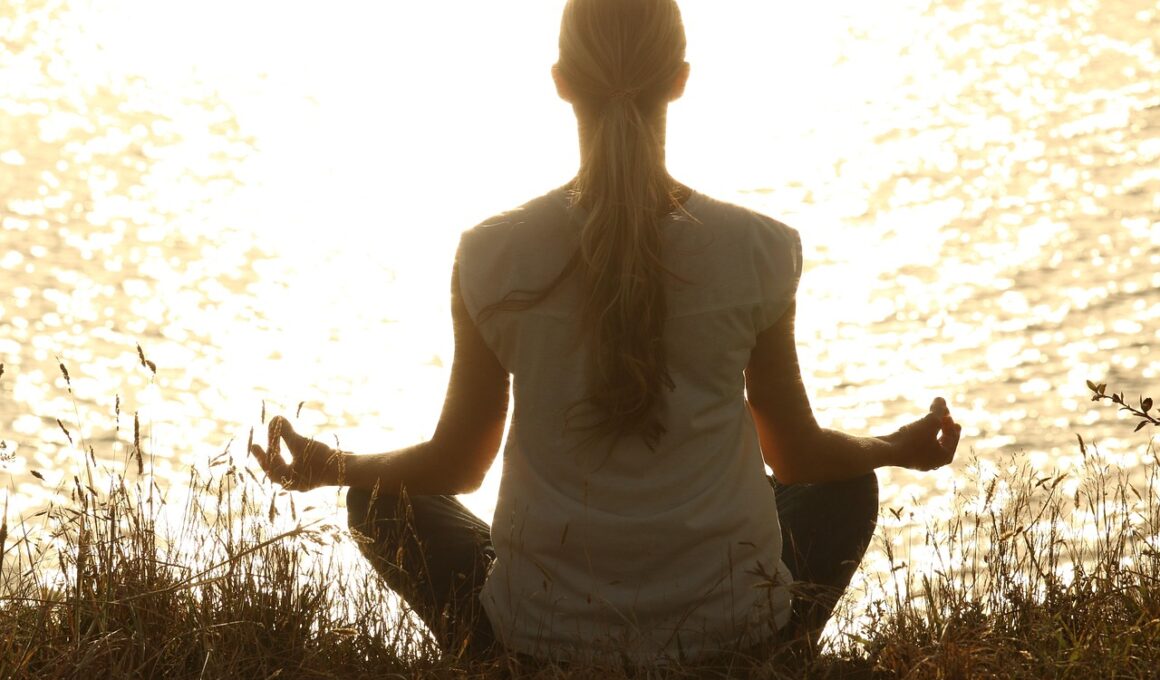The Best Time of Day to Practice Yoga for Stress Relief
Yoga is an ancient practice known for its numerous benefits, including effective stress relief. Finding the right time to practice yoga can play a significant role in maximizing its positive effects. Morning yoga sessions can be particularly beneficial as they help you start the day with a calm and centered mindset. As you awaken your body and mind, the practice can cultivate a sense of peace, reducing stress throughout the day. Practicing in the morning also allows for uninterrupted time, letting you create a personal routine without the distractions of daily life. Moreover, morning yoga can enhance your focus and set a positive tone for your day ahead. Many practitioners find that an early start enables them to engage with their intentions more clearly, leading to greater emotional resilience throughout the day. For those prone to stress, carving out this time can serve as a powerful reminder to breathe and remain present. So, considering the numerous benefits, morning yoga can be a transformative practice to deeply nurture stress relief and a balanced mindset throughout your day.
For many individuals, the afternoons can be challenging, causing heightened stress levels and diminished energy. Practicing yoga in the afternoon might just provide the much-needed break to re-center and rejuvenate. Afternoon yoga sessions help in releasing accumulated tension that builds throughout the morning. This practice serves as a mini-retreat, offering an opportunity to step away from work and obligations. Engaging in yoga during this time encourages mindfulness, allowing practitioners to check in with their emotions and physical sensations. Realigning the body and mind can lead to a boost in creativity and productivity, significantly counteracting stress. The yoga postures practiced in the afternoon can also depend on the intensity of your day. Gentle, restorative postures like child’s pose and seated forward bends are excellent for relieving tension. A few minutes of deep breathing and meditative practices can also effectively ground you. This timeframe allows the mind to refresh, enhancing clarity and focus when returning to your tasks. Overall, afternoon yoga can be a liberating practice to transform stress into feelings of gratitude and contentment, making it a valuable addition to your day.
Evening Yoga: A Time for Relaxation
Practicing yoga in the evening brings a peaceful close to your day. This time allows you to reflect on your experiences, clear your mind, and prepare for restful sleep. Evening yoga sessions can be particularly beneficial for unwinding after a long day filled with various stressors and challenges. Engaging in gentle practices, such as restorative yoga or yoga nidra, can ease your body into relaxation. As you engage in deeper stretches and calming postures, your muscles will release the built-up tension accumulated throughout the day. The calming effects of evening yoga also have the potential to enhance your sleeping patterns. Deep breathing and meditative techniques practiced during this time can signal your body that it’s time to wind down, making it easier to fall asleep. Establishing an evening routine that includes yoga can create a sacred space for self-care. Just setting aside this time can foster a sense of serenity and gratitude. Practicing evening yoga can help in letting go of the day’s stress while inviting tranquility for a beautiful night ahead.
Understanding that everyone’s schedule is different, finding the optimal time for yoga requires personal experimentation. While the morning, afternoon, and evening all have unique advantages, the best time truly depends on individual needs and lifestyles. Some may prefer early mornings for the refreshing start it provides, while others may seek the solace of warming up in the evening. If you lead a busy life, it’s essential to assess your energy levels and mood throughout the day. Creating a regular yoga practice at a time that’s convenient will help establish consistency and desire. It’s also helpful to explore different types of yoga suited to your daily rhythms. Remember that the quality of your practice holds greater significance than the hour on the clock. Engaging in any form of yoga is beneficial regardless of time, as it enhances your connection with yourself. Overall, experimenting with various times for practice can reveal when you’re most receptive to its healing effects. Tailoring your yoga sessions in accordance with stressors will maximize the benefits received, leading to a more profound practice over time.
Consistency is Key
A critical aspect of reaping the benefits of yoga for stress relief is cultivating consistency in your practice. Whether it’s morning, afternoon, or evening, committing to regular sessions works wonders for the mind and body. By setting specific times for yoga each week, you create a routine that fosters resilience against daily stressors. Aim to engage in yoga practice multiple times a week; consider creating a schedule that aligns with peak energy levels. Consistency not only allows you to deepen your understanding of the postures and breathing techniques, but it also invigorates your overall well-being. Mini-yoga sessions, lasting even 10 or 15 minutes, are effective in embedding the practice into your lifestyle. Over time, you will notice that these practices lead to improved mental clarity and emotional stability. Ultimately, consistency turns the practice into habit, cementing yoga as a go-to resource for managing stress. With dedication and commitment, the transformational benefits of yoga will become an inherent part of how you respond to everyday challenges.
Several additional elements can enhance your yoga practice and make it more effective in relieving stress. For instance, incorporating aromatherapy into your practice can create an environment conducive to relaxation. Essential oils like lavender or chamomile can help calm the mind as you flow through your postures. Creating a tranquil space for practice by dimming the lights or utilizing soft music enhances the overall ambiance. It’s essential to eliminate distractions, ensuring you have a quiet area where you can focus entirely on your yoga practice. Also, consider the benefits of practicing with a group, as shared energy can provide additional motivation and support. Connecting with others during yoga sessions improves your experience while fostering a sense of community. Engaging in guided sessions can add structure to your practice, enabling you to learn new techniques and deepen your understanding of postures. Each of these factors contributes to making your yoga practice a fulfilling and nourishing experience. Embracing these elements can amplify stress relief, leading to a more integrated approach to wellness and self-care.
The Connection Between Breath and Yoga
Understanding the role of breath during yoga practice is paramount to effectively managing stress. Breath serves as the life force, acting as a bridge between the body and mind. Proper breathing techniques can amplify the calming effects of yoga while facilitating relaxation and emotional release. The practice of pranayama, or breath control, is a powerful tool for stress management, allowing you to tap into your body’s innate wisdom. Focusing on your breath helps ground your practice and fosters mindfulness, guiding you to become present in the moment. During your sessions, aim to synchronize your breath with your movements, enhancing the meditative aspects of your practice. Inhale deeply and exhale fully, letting go of tension and inviting peace into your life. Recognizing the body’s signals during practice strengthens the connection to your feelings and helps facilitate emotional processing. This awareness ultimately fosters resilience against stress. As you develop your breath awareness, you will notice a shift in your overall experience and ability to navigate stress in everyday life. Embracing the breath in yoga truly transforms your practice into a powerful avenue for relief.
In conclusion, exploring the optimal time for practicing yoga can significantly impact your stress management efforts. Morning, afternoon, and evening all offer distinct benefits, catering to various needs and lifestyles. Whether you prefer starting your day with invigorating poses or concluding with calming stretches, finding your personalized routine is essential. Additionally, consider integrating elements like aromatherapy, a tranquil space, and even guided sessions to enhance your practice. Most importantly, commit to engaging with your breath during yoga. Breath awareness is central to creating that vital mind-body connection. Consistency in practice will ensure you experience the profound effects that yoga has on your physical and mental well-being. As you embark on your yoga journey for stress relief, remember that this practice is deeply personal. Give yourself the grace to listen to your body and find what works best for you. Embrace the journey and explore the nuances of your yoga practice. By tailoring your sessions to suit your unique preferences, you’ll cultivate resilience against stress and invite greater peace into your life. Ultimately, practicing yoga becomes not just an exercise but a holistic approach to well-being and self-discovery.


